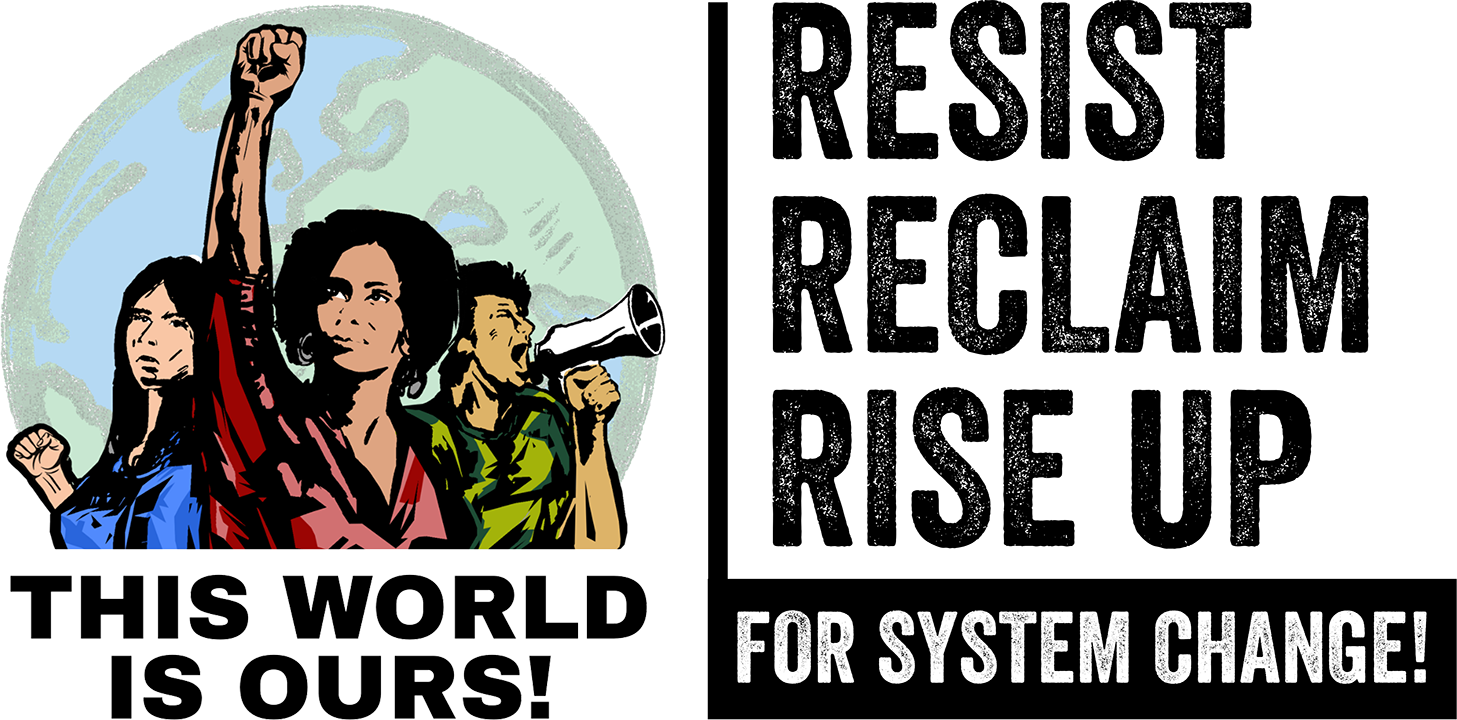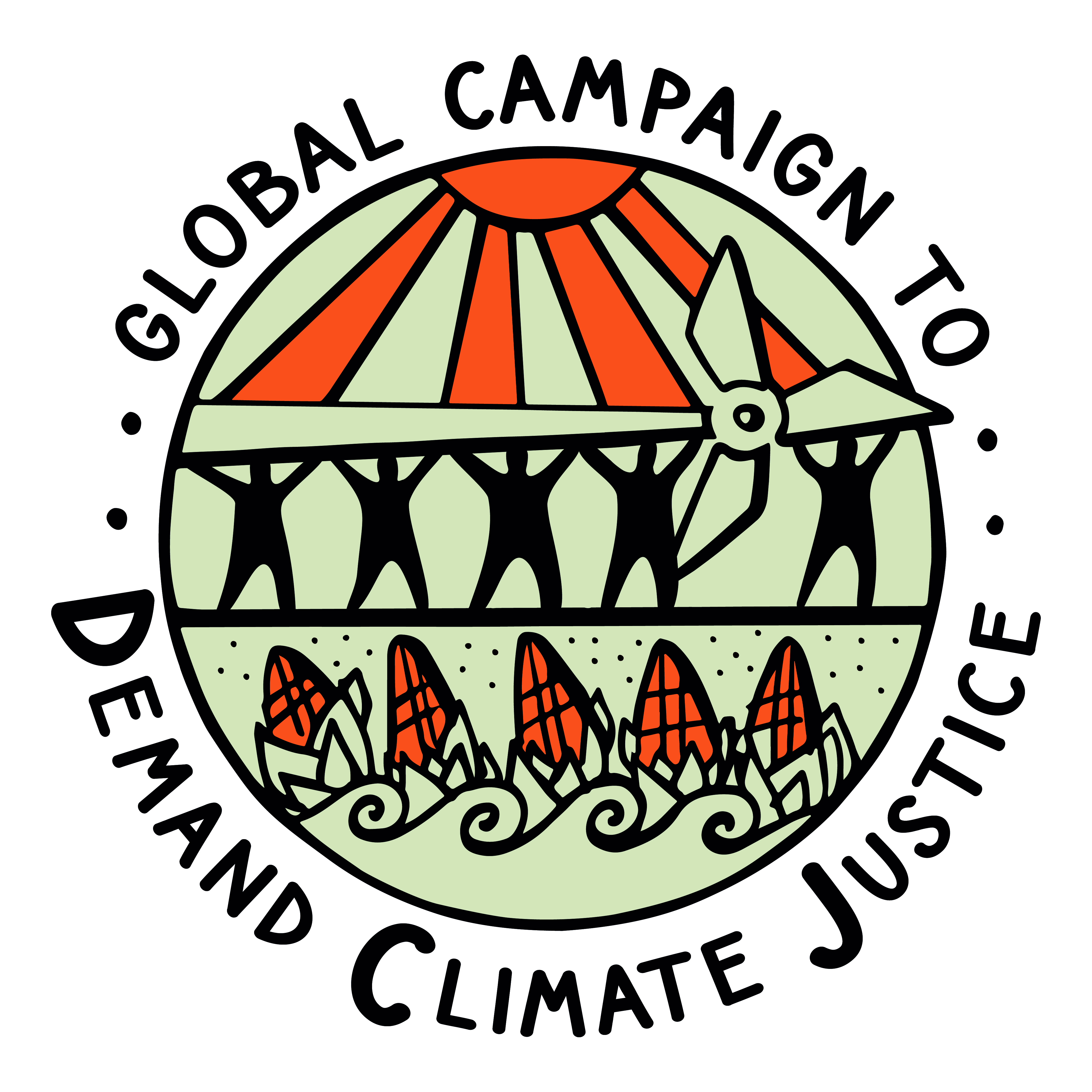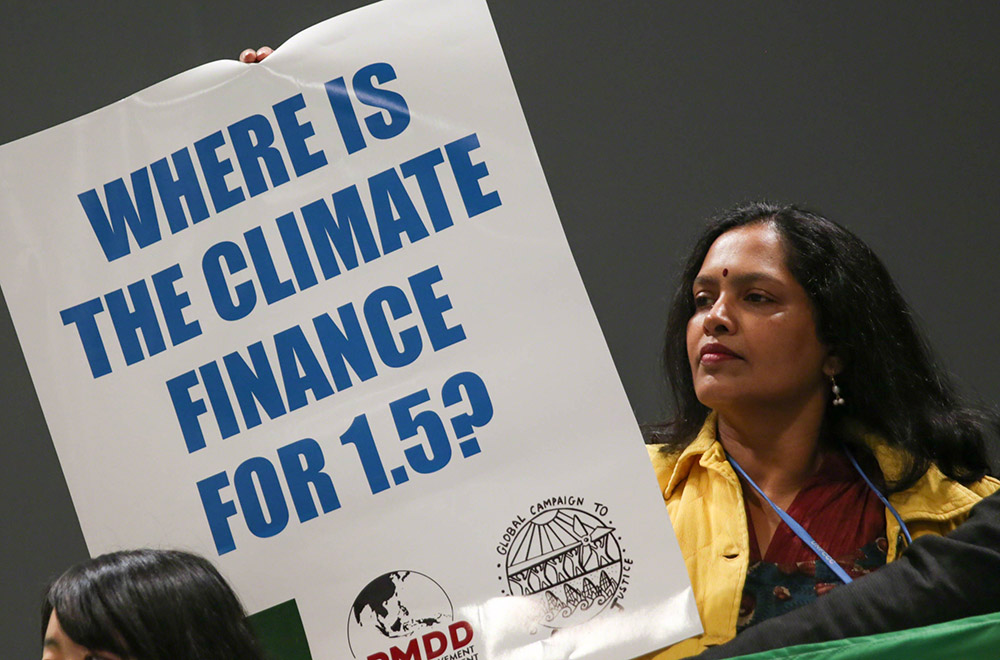Climate change is a grave and urgent threat to life on earth on a global scale. The challenge is dire, but more for the people and communities of the Global South who stand to bear the brunt of its most harmful consequences because of accumulated economic and social vulnerabilities throughout history till the present.
A critical piece of immediate as well as strategic response to the climate crisis is Finance. The mobilization of unprecedented levels of finance is needed- on the one hand to enable people, communities and nations to deal with present and as well as already unavoidable future impacts of climate change, much of which are irreversible, and on the other hand to make the systemic and technological transformation necessary to prevent the worst catastrophes, solve global warming and heal the planet.
The Global Campaign for climate finance is a multi-year campaign by DCJ and its members that aims to mobilise climate finance from the Global North to the Global South as per legal obligation under the United Nations Framework Convention on Climate Change (UNFCCC) through public grants, and not in the form of loans or private investments.
Campaign Highlights

Pay Up! | GLOBAL WEEK OF ACTION 13-20 SEPTEMBER 2024
On July 25, 2924, movements and civil society organizations with DCJ in the co-lead launched ‘Pay Up’, a global campaign demanding Global North governments to pay US$5 trillion a year in public funds as a down payment for their Climate Debt with coordinated escalations across the world including during key moments including a Global Week of Action in September during the period of the UNGA, the Summit of the Future and COP30.

What is climate finance?
In keeping with the “polluter pays” principle and the recognition of the North’s historical responsibility for causing the climate crisis and corresponding obligations to address it, developed countries responsible for the climate crisis must provide climate finance. These commitments to the South must be through public funds, and not in the form of loans or private investments.
The provision of climate finance can be seen as part of reparations for the climate debt that the North owes to the South. It is also a legal obligation under the United Nations Framework Convention on Climate Change (UNFCCC).
What is the climate debt the Global North owes to the Global South?
The Global North has an incalculable climate debt owed to the Global South, stemming from their historical and ongoing greenhouse gas emissions that have caused and will continue to cause massive losses and damages. There is a historial, ethical and legal responsibility of the Global North to repay this debt with urgency based on their fair shares, as part of a larger historical and continuing social, economic, and ecological debt owed to the Global South, arising from centuries of exploitation and inequity.
DCJ Global Campaign on Climate Finance goals:
- Restoration of the Global South’s atmospheric space that is occupied by Global North’s GHG emissions. This implies the decolonization of the atmosphere through the reduction and absorption of emissions from the Global North.
- Global North to assume responsibility for the billions of people including those will be forced to migrate due to the climate crisis, and eliminate their restrictive immigration policies offering migrants a decent life with full human rights guarantees
- Global North to be responsible for full delivery of adequate, non-debt creating and equitable climate finance that will fully meet the mitigation, adaptation and loss and damage needs of the people and communities of the Global South.
- Creation of a democratic and accountable global fund that is independent of other international financial institutions and upholds transparency and public accountability and oversight, freedom of information, equitable and fair allocation of resources, direct access, country-determined, participatory decisions on the use of funds, people and community-driven climate programs, and the application of highest social, gender and environmental standards
- No to domination of the Green Climate Fund and climate finance by the private sector
- The World Bank and other multilateral development banks to have no role in the Green Climate Fund. The World Bank has a poor record, not just on climate action but also democratic governance, social justice, and environmental integrity.
- No to debt-creating and harmful financial instruments, no to domination of private finance and market instruments, no to using climate finance to impose conditionalities
- End of subsidies to corporations that exacerbate the climate crisis, hold polluting companies legally responsible for their impacts on people and the planet
- Ensure appropriate technology transfers without intellectual property barriers. Developed countries must ensure free sharing of safe, appropriate and ecologically and socially sound technologies.
How much climate finance is needed?
Experts say it is hard to project the full extent and requirements of actual climate finance needed, but latest estimates from the UNFCCC Standing Committee on Finance Needs Determination Report (2021), the total amount of costed needs for climate finance range between USD 5.8–5.9 trillion to USD 11.5 trillion by 2030.
LOSS AND DAMAGE FINANCE
- What is L&D?
- Loss and damage refer to climate impacts that can not be avoided by mitigation, adaptation and other measures such as disaster risk management.
- It has both economic and non-economic costs and results from both extreme weather events like hurricanes and floods and slow onset climatic processes such as sea level rise, glacial collapse and water salinization.
- It includes permanent and irreversible losses such as to lives, livelihoods, cultural values, and other non-economic impacts, such as the loss of culture, identity, ecosystem services and biodiversity, which cannot be quantified in monetary terms.
- Currently, addressing L&D follows a broad definition, allowing other mechanisms (i.e. Disaster Risk Management, Humanitarian Assistance, and ODA) to cover various L&D needs.
- How much finance is needed to respond to Loss and Damage?
- Climate Analytics’ projections for the economic cost of loss and damage by 2030 is estimated at USD 400 billion a year; others estimate between USD 290 and 580 billion in developing countries alone, and is projected to rise between USD 1 to 1.8 trillion annually by 2050.
- Major climate and weather events in developing countries in 2022, caused more than $74 billion in losses.
- Established at COP27 in Egypt, the L&D Fund aims to fill the financial gap in climate finance and respond to the harms caused by climate impacts. This year is crucial as the Transitional Committee develops recommendations to shape the L&D Fund according to its agreed purpose and present “new financial arrangements” around L&D.

